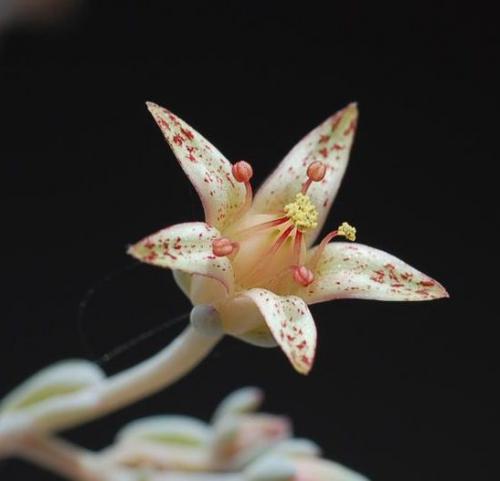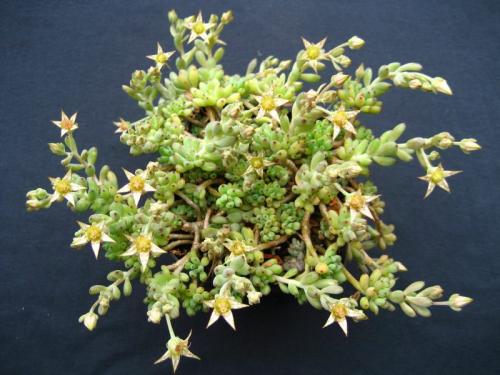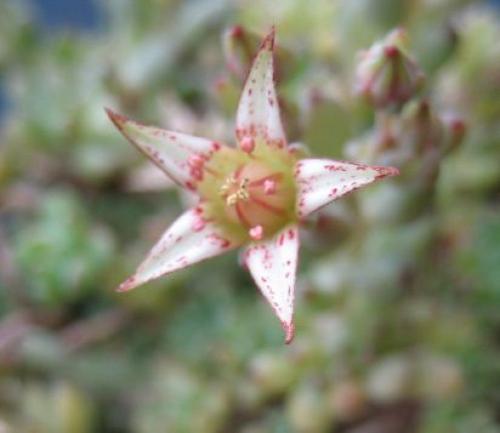PACHYPHYLLUM Rose, 1922
Synonyms :
Sedum atypicum A. Berger (1930)
Echeveria minutifoliata von Poellnitz (1935)
Distribution : Mexico (Guanajuato, Hidalgo, Jalisco, Querétaro, San Luis Potosí, Zacatecas); shady rocks and cliffs, 1900 – 2300 m.
Description (by J. Thiede in IHSP, 2003) :
Shrublets.
Stems erect, to 7 cm or decumbent to 20 cm, bluish-green, later becoming brown.
Rosettes 1.5 – 4.5 cm, with 15 – 50 congested leaves, often matforming.
Leaves clavate to oblanceolate or –spatulate, obtuse to broadly pointed, apically mostly papillose and mucronate, 0.8 – 1.5 (-2.2) x 0.4 – 0.7 (-1.1) cm, 2 – 4 (-6) mm thick, ± glaucous-pruinose, tip often dark red.
Inflorescences 2 – 10 cm, lax thyrses with 1 – 4 scorpioid branches with up to 5 flowers each, bracts in shape and size ± like the rosette leaves, pedicels 5 – 25 (-40) mm.
Flowers 5-merous, sepals appressed or somewhat patent, oblong, acute, ± unequal, 2 – 8 x 1 – 2.5 mm, corolla 11 – 23 mm diameter, petals triangular-lanceolate, 6 – 10 x 2,5 – 4.5 mm, greenish-whitish, tube 3 – 5 x 4 – 7 mm, lobes acute, weakly red-spotted or with 3 – 7 inconspicuous stripes.
Cytology : n = 30, 170 ± 5, 175 ± 2, ± 193, 208 ± 3, 270 ± 5.
Moran writes : "G. pachyphylllum is widespread, but seemingly thinspread, in the mountains of central Mexico, from Zacatecas and San Luis Potosí to Jalisco and Hidalgo, a span of nearly 500 km. .... it is common where it does occur, forming large colonies; but it seems to be known from only nine places over this range" (Cactus & Succulent Journal of America, 1990).
The nearest relative might be G. saxifragoides - both are summer flowering plants reaching highest elevations in the mountains. G. pachyphyllum is a low growing plant, prefering shady spots and forming loose mats on rocks or dense clusters in crevices.
Plants in habitat in Mexico :
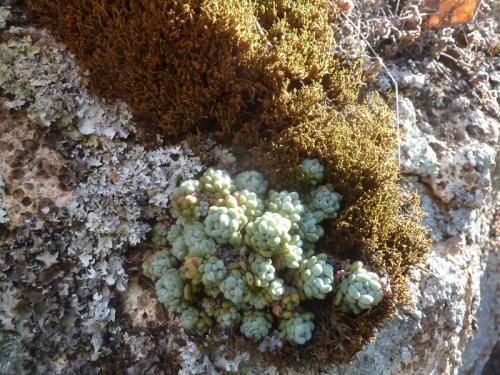


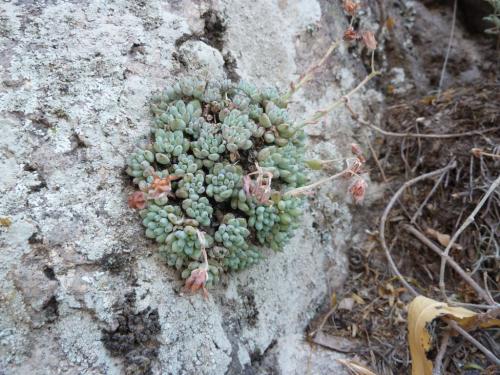
Plants in cultivation :
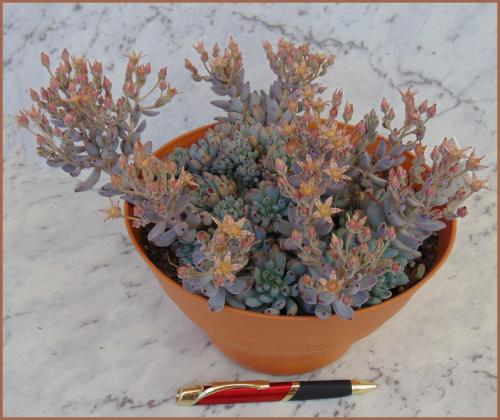
Photo Joan Steele
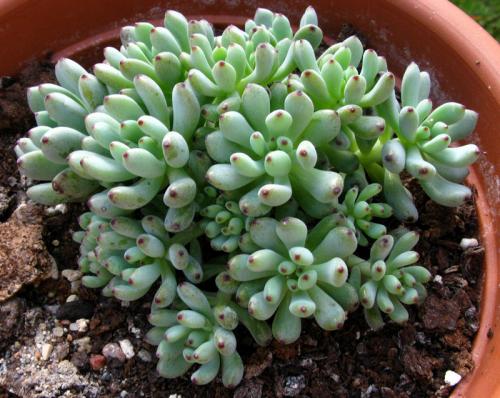
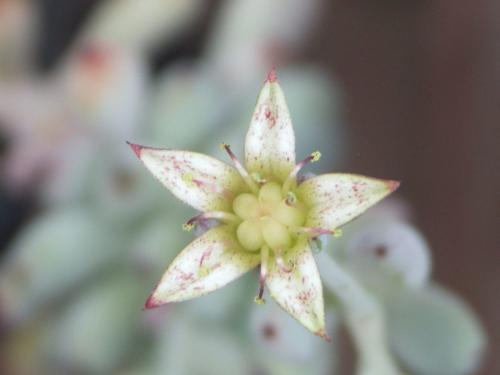
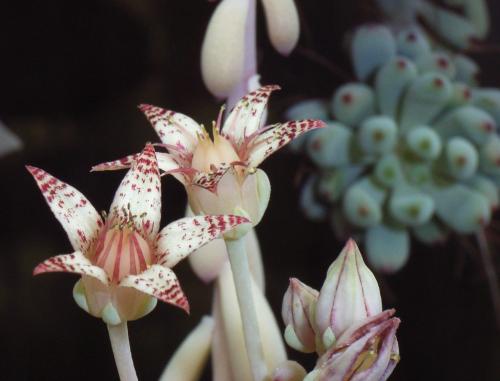



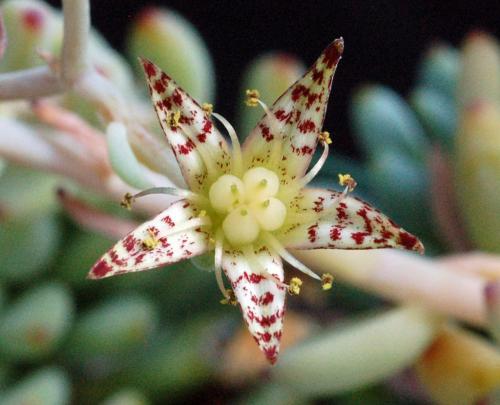
G. pachyphyllum from Guanajuato
Photos Bernie DeChant
